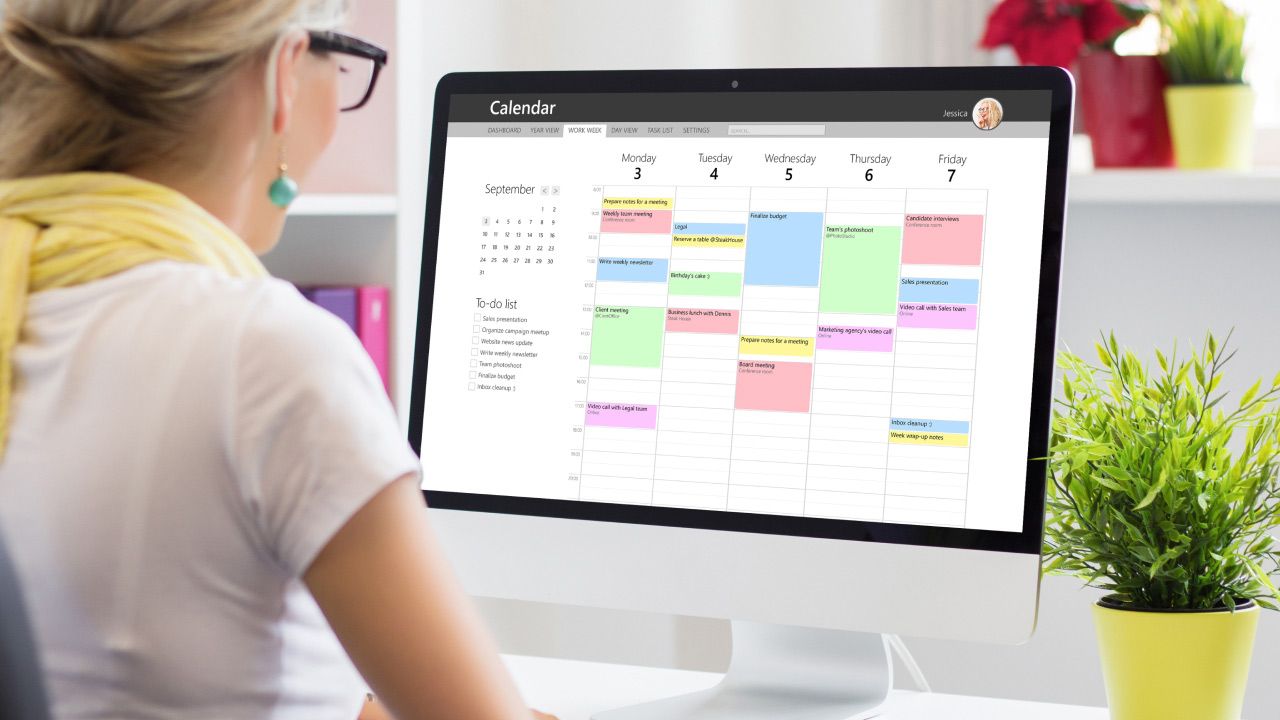
Understanding the 4Ds of Productivity
What are the 4 Ds of Time Management?
In today's fast-paced world, managing time effectively is crucial for both personal and professional success. Enter the 4Ds of productivity: a powerful framework designed to help you prioritize and manage tasks efficiently. But what exactly are the 4Ds, and how can they transform your daily routine?
Importance of Productivity Tools
The importance of productivity tools cannot be overstated. By integrating the 4Ds into your daily planning, you can leverage these tools to boost your productivity and reduce stress. Whether you're juggling multiple projects, dealing with team dynamics, or simply trying to stay on top of your to-do list, understanding and applying the 4Ds can make a significant difference.
Using the 4Ds approach, you will learn to define, delegate, defer, and delete tasks, streamlining your workflow and ensuring that you focus on what truly matters. This system not only helps in managing immediate tasks but also aligns your efforts with long-term goals, setting you up for future success.
Embrace the 4Ds today and take the first step towards a more organized, efficient, and productive life.

What are the 4 Ds of Productivity?
Define
The first D stands for Define. This step is all about identifying and clarifying the tasks that need to be accomplished. Defining your tasks means breaking them down into specific, manageable actions. This approach helps you understand the importance of each task and prioritize accordingly. By clearly defining your tasks, you set the foundation for an efficient productivity system that aligns with your goals and future plans.
Delegate
The second D is Delegate. Delegation involves assigning tasks to others, which is crucial for managing workload and ensuring effective team performance. Understanding when and how to delegate can significantly improve productivity. It requires trust and clear communication to ensure that the right tasks are assigned to the right people. Delegating tasks not only frees up your time but also empowers your team members, fostering a collaborative and efficient work environment.
Defer
The third D is Defer. Deferment means postponing tasks that are not immediately necessary. This decision-making process helps in managing time and reducing pressure by prioritizing tasks that are more urgent and important. Learning to defer tasks effectively can change the way you handle your workload, ensuring that you focus on high-priority items without getting overwhelmed by less critical tasks.
Delete
The fourth D stands for Delete. This step involves eliminating tasks that are not essential. Deleting unnecessary tasks can be a game-changer for productivity, as it allows you to focus on what truly matters. This process helps in reducing clutter and ensuring that your energy is directed towards meaningful and impactful work. By regularly reviewing and deleting tasks that do not align with your goals, you maintain a streamlined and efficient workflow.
By incorporating the 4Ds into your daily routine, you can manage tasks more effectively, make better decisions, and achieve greater productivity.
Define: The First D
Identifying Priorities
The first step in the 4Ds of productivity is to define your tasks by identifying priorities. Knowing what tasks are most important helps you allocate your time and resources effectively. By aligning your tasks with your long-term goals, you ensure that your daily activities contribute to your overall success. This practice reduces the pressure and energy spent on less critical tasks, allowing you to focus on what truly matters.
Setting Clear Goals
Setting clear goals is essential in defining your tasks. Clear goals provide direction and purpose, making it easier to manage and complete tasks efficiently. When your tasks are aligned with your goals, you can prioritize more effectively, making each day productive and worthwhile. This approach not only enhances productivity but also ensures that your efforts are directed towards meaningful outcomes.
Delegate: The Second D
When to Delegate Tasks
Delegation is a crucial part of the 4Ds of productivity. Knowing when to delegate tasks can significantly enhance your productivity and that of your team. Tasks that are time-consuming but not critical to your role should be delegated to team members who have the necessary skills. This not only frees up your time for more important tasks but also provides growth opportunities for your team.
How to Choose the Right Person
Choosing the right person to delegate tasks to is essential for effective task management. Trust and clear communication are key. Ensure that the team member you delegate to has the appropriate skills and knowledge to complete the task efficiently. This practice not only improves overall team performance but also builds trust and cohesion within the team, creating a more productive and collaborative work environment.

Defer: The Third D
Understanding Task Prioritization
Deferring tasks is about understanding which tasks can be postponed to manage your time more effectively. By prioritizing tasks that are urgent and delaying those that can wait, you reduce pressure and focus on what needs immediate attention. This approach allows you to allocate your time and resources where they are most needed, ensuring effective task management and productivity.
Effective Scheduling Techniques
Effective scheduling techniques are crucial when deferring tasks. Creating a schedule that clearly outlines when to tackle specific tasks helps you manage your workload and avoid unnecessary stress. Use tools and systems to set reminders and deadlines, ensuring that deferred tasks are revisited at the appropriate time. This practice not only helps in managing tasks more efficiently but also provides opportunities to address tasks at a later date without compromising productivity.
Delete: The Fourth D
Eliminating Unnecessary Tasks
The final D in the 4Ds of productivity is Delete. This involves eliminating tasks that do not add value to your goals or productivity. By removing unnecessary tasks from your to-do list, you free up time and mental energy to focus on what truly matters. This simple yet effective approach ensures that your efforts are directed towards tasks that contribute to your success and well-being.
Benefits of Streamlining Work
Streamlining your work by deleting non-essential tasks has several benefits. It reduces clutter and allows you to manage your workload more effectively, ultimately enhancing productivity. This process also lowers costs associated with wasted time and resources, making your work process more efficient. By keeping your to-do list focused on important tasks, you create a more productive and stress-free environment, which is essential in today’s fast-paced world.
How to Use the 4Ds with a To-Do List
Integrating the 4Ds into Daily Planning
Integrating the 4Ds into your daily planning is essential for maximizing productivity. Start by categorizing each task on your to-do list using the 4Ds: Define, Delegate, Defer, and Delete. This practice helps you manage tasks effectively and ensures that you are focusing on the most important activities. By regularly reviewing and updating your to-do list with the 4Ds approach, you create a systematic way to tackle daily tasks, reducing stress and improving efficiency.
Tools and Apps for To-Do Lists
Using the right tools and apps can enhance the effectiveness of the 4Ds system. There are many productivity tools available that can help you organize and manage your to-do list. Apps like Todoist, Trello, and Microsoft To Do allow you to categorize tasks, set reminders, and track progress. These tools can be integrated into your daily routine, making it easier to apply the 4Ds and manage projects efficiently. By leveraging these tools, you can streamline your workflow, stay on top of your tasks, and ensure that you are consistently productive.
Tips for Effective To-Do List Management
Keeping It Simple
When managing your to-do list, simplicity is key. Keep your list straightforward by focusing on the most important tasks and breaking them down into manageable parts. This approach makes it easier to stay organized and reduces the pressure of dealing with a long, complex list. A simple to-do list ensures that you can effectively manage your tasks and maintain productivity without feeling overwhelmed.
Regular Review and Update
Regularly reviewing and updating your to-do list is crucial for maintaining an effective productivity system. Set aside time each day to go through your list, mark completed tasks, and adjust priorities as needed. This process helps you stay on track and ensures that your list remains relevant and aligned with your goals. Consistent review and updates make it easier to manage tasks and adapt to any changes or new opportunities that arise.

Common Challenges and How to Overcome Them
DIFFICULT (Challenge)
One of the most common challenges when managing tasks is dealing with difficult and complex tasks. These can create significant pressure and hinder productivity. To overcome this challenge, break down complex tasks into smaller, manageable parts. This approach makes them less daunting and easier to tackle. Prioritizing and using the 4Ds system can help you manage these tasks more effectively, ensuring that you stay on track and maintain performance.
Staying Consistent
Consistency is key to effective task management. However, it can be challenging to stay consistent with your productivity practices, especially during busy or stressful times. To deal with this, establish a routine and stick to it. Regularly review and update your to-do list, and make use of productivity tools to keep your system in place. Consistent practice helps reinforce good habits and ensures that you can manage tasks efficiently over the long term, regardless of the challenges you face.
Benefits of Using the 4Ds Approach
Increased Efficiency
Implementing the 4Ds approach significantly enhances productivity and efficiency. By defining, delegating, deferring, and deleting tasks, you streamline your workflow and focus on what truly matters. This method reduces wasted time and effort, allowing you to achieve more in less time. The 4Ds system helps manage your tasks effectively, ensuring that your energy is directed towards high-priority activities that contribute to your goals.
Reduced Stress
Another key benefit of the 4Ds approach is reduced stress. By having a clear system to manage tasks, you can avoid feeling overwhelmed and maintain better control over your workload. This structured approach helps you deal with tasks methodically, reducing the pressure and anxiety associated with disorganization. As a result, you can enjoy a more balanced and stress-free work environment, making the 4Ds approach a worthwhile addition to your productivity toolkit.
Real-Life Examples of the 4Ds in Action
Case Study: Successful Implementation
To illustrate the effectiveness of the 4Ds approach, consider this case study of a marketing team at a leading tech company. Facing a significant backlog of tasks and tight deadlines, the team implemented the 4Ds system. By defining their tasks, delegating responsibilities, deferring non-urgent items, and deleting unnecessary activities, they managed to streamline their workflow. Over the course of several years, this process led to increased productivity and significant cost savings. The successful implementation of the 4Ds approach not only improved task management but also fostered a culture of efficiency and focus, showcasing the transformative power of this system.

Conclusion: Embracing the 4Ds for Better Productivity
Summary of Key Points
In summary, the 4Ds of productivity—Define, Delegate, Defer, and Delete—offer a structured approach to managing tasks effectively. By integrating these principles into your daily planning, you can streamline your workflow, reduce stress, and enhance overall productivity.
Encouragement to Start Today
Start implementing the 4Ds today to take advantage of the great opportunities they provide. Embrace this approach and set yourself up for a more productive and successful future. Remember, the key to productivity is not just managing your tasks but doing so in a way that aligns with your goals and values.